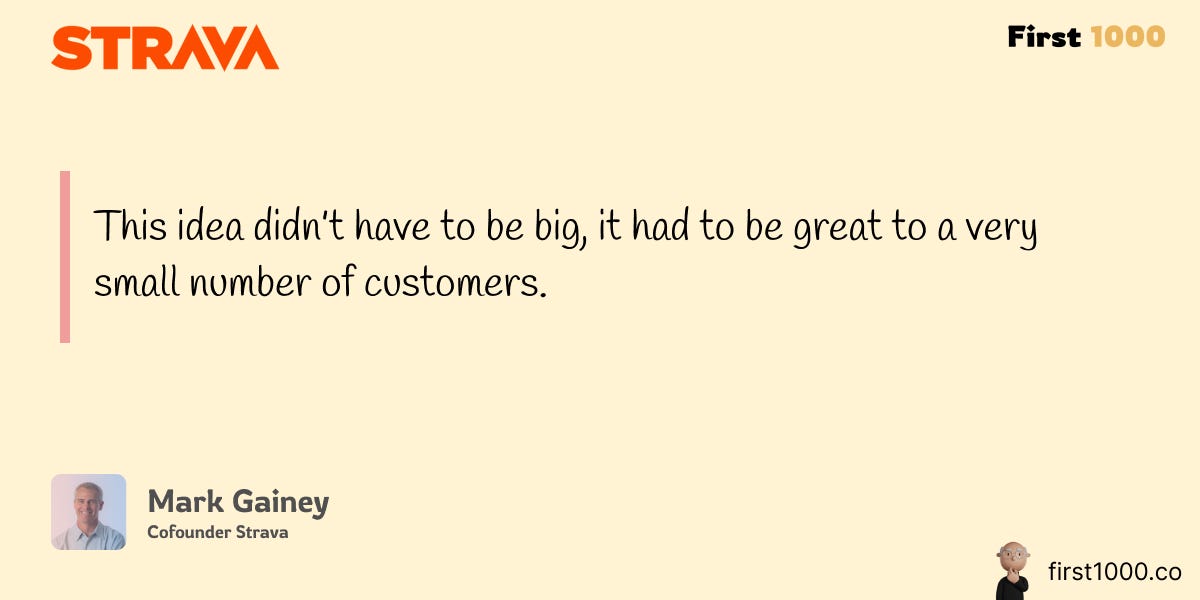Saved by Xuanling11
Strava
Early on, the way we approached our go-to-market was opposite of what most companies do, which is start with a super niche audience, find them, target them and expand to new markets
We started completely horizontal with a blank-slate product, and we got more and more narrow with our focus on landing customers over time. We started seeing organic ado
... See moreFirst Round Capital • Airtable's Path to Product-Market Fit
Timour Kosters added

Any startup that could be described as a marketplace usually has to start in a subset of the market, but this can work for other startups as well. It's always worth asking if there's a subset of the market in which you can get a critical mass of users quickly.
Paul Graham • Do Things that Don't Scale
Ajinkya Wadhwa added
To cross the chasm, startups must first dominate a niche or create a beachhead and then expand from a position of strength. Too often, startups try to skip the early adopter stage and move to early majority. The issue is that the early majority requires references, and they won’t buy the product no matter how valuable it is without them.
Parsa Saljoughian • 7 Lessons from Andy Rachleff on Product-Market Fit
sari added
Strava users may start as loners, only tracking their own activities, but the hope is that they will soon be hooked into tracking friends and peers, and that this will push them to go further and faster.
Rose George • Kudos, leaderboards, QOMs: how fitness app Strava became a religion
sari added
I should mention one sort of initial tactic that usually doesn't work: the Big Launch. I occasionally meet founders who seem to believe startups are projectiles rather than powered aircraft, and that they'll make it big if and only if they're launched with sufficient initial velocity. They want to launch simultaneously in 8 different publications, ... See more
Do Things that Don't Scale
Vernal said this focus on nurturing community was key to getting a foothold in the product world. “It would be futile and foolhardy to try to compete with Microsoft and Google in a top-down way, to build a similar product and sell against them,” says Vernal. “Instead, they found a small group of really die-hard fans that carried the product with th... See more
Sequoia Capital • ivan zhao
sari added
It’s hard to compete with big social networks head-on these days. The network effects of those giant social networks are so strong, a straight-on challenge seems, well, challenging. But there is lots of opportunity to focus on one user niche or one specific form factor.
Jonathan Lai • The Founder's Dilemma: To Compete or Unbundle | Andreessen Horowitz
sari added
